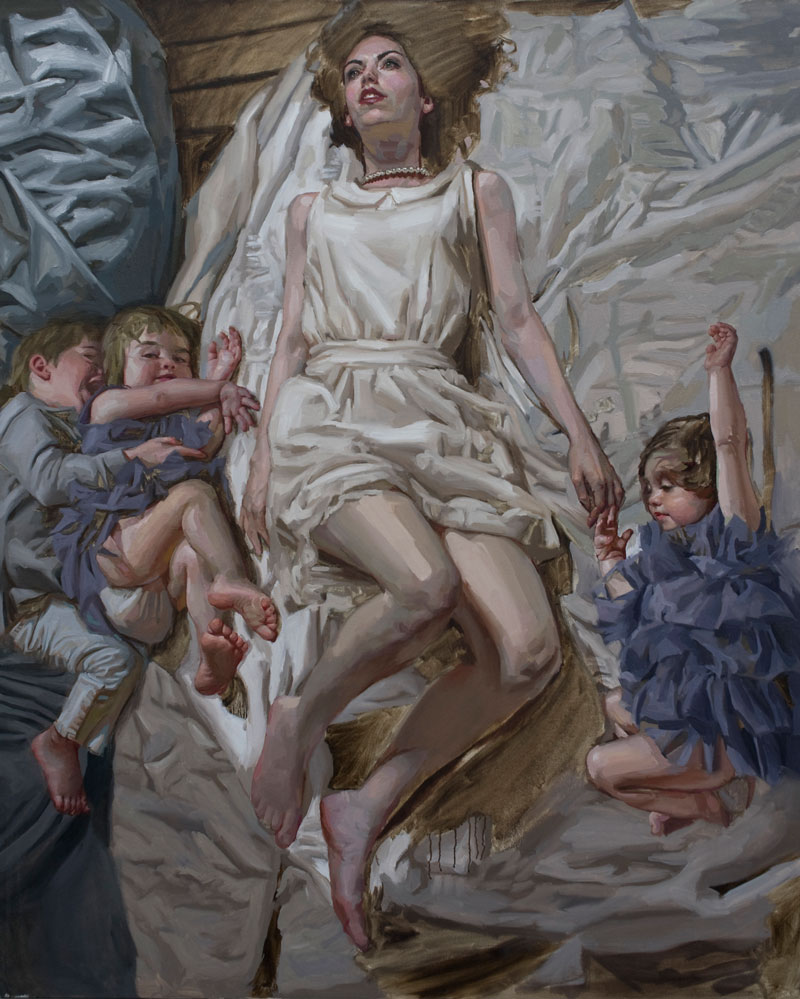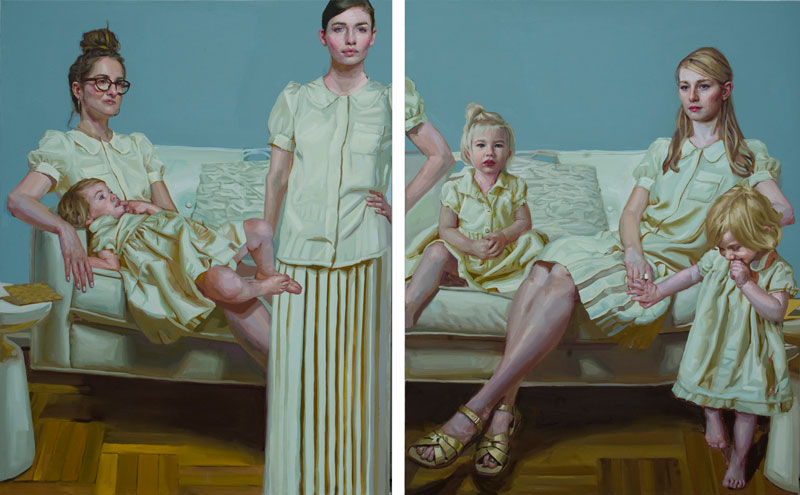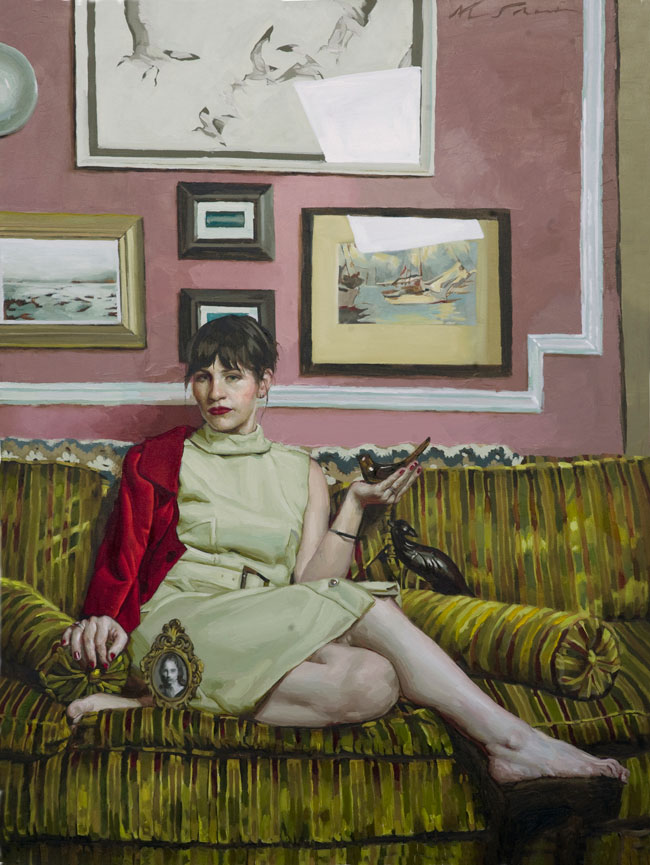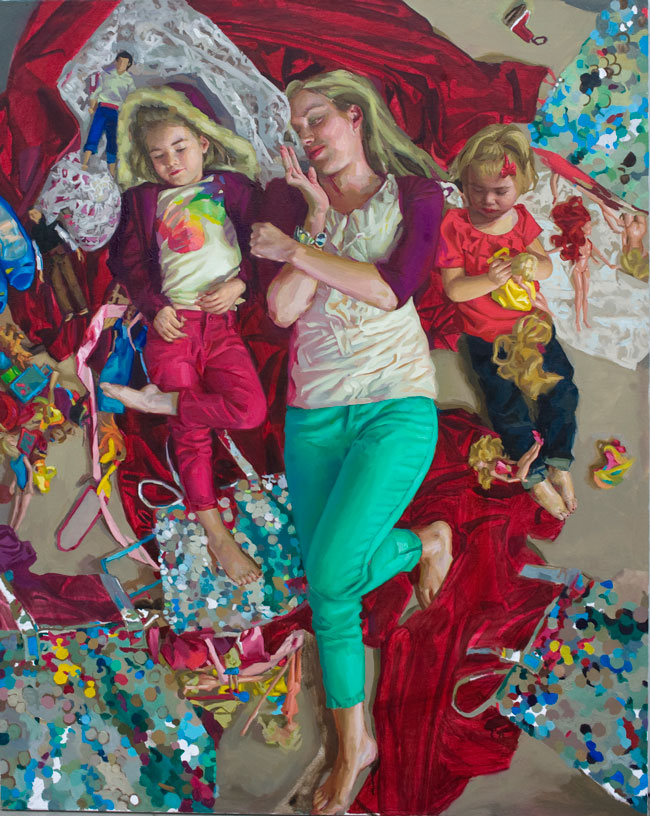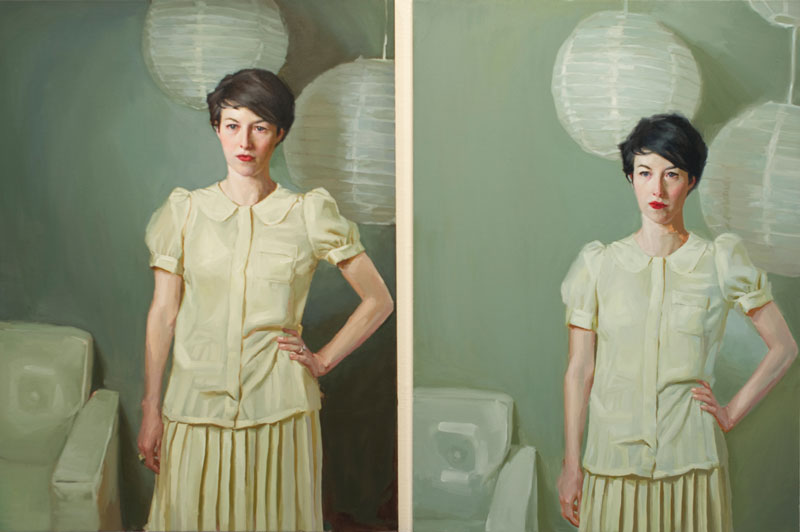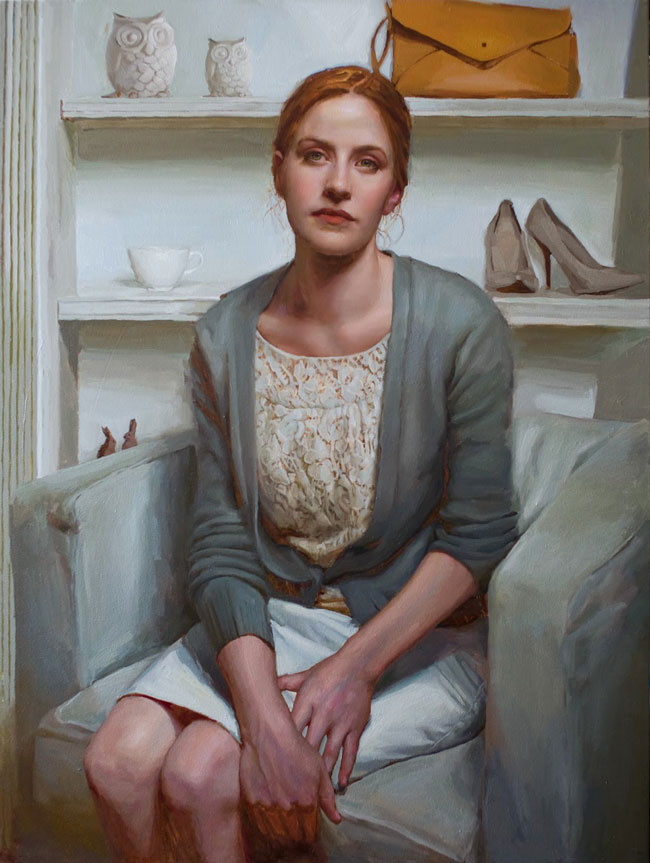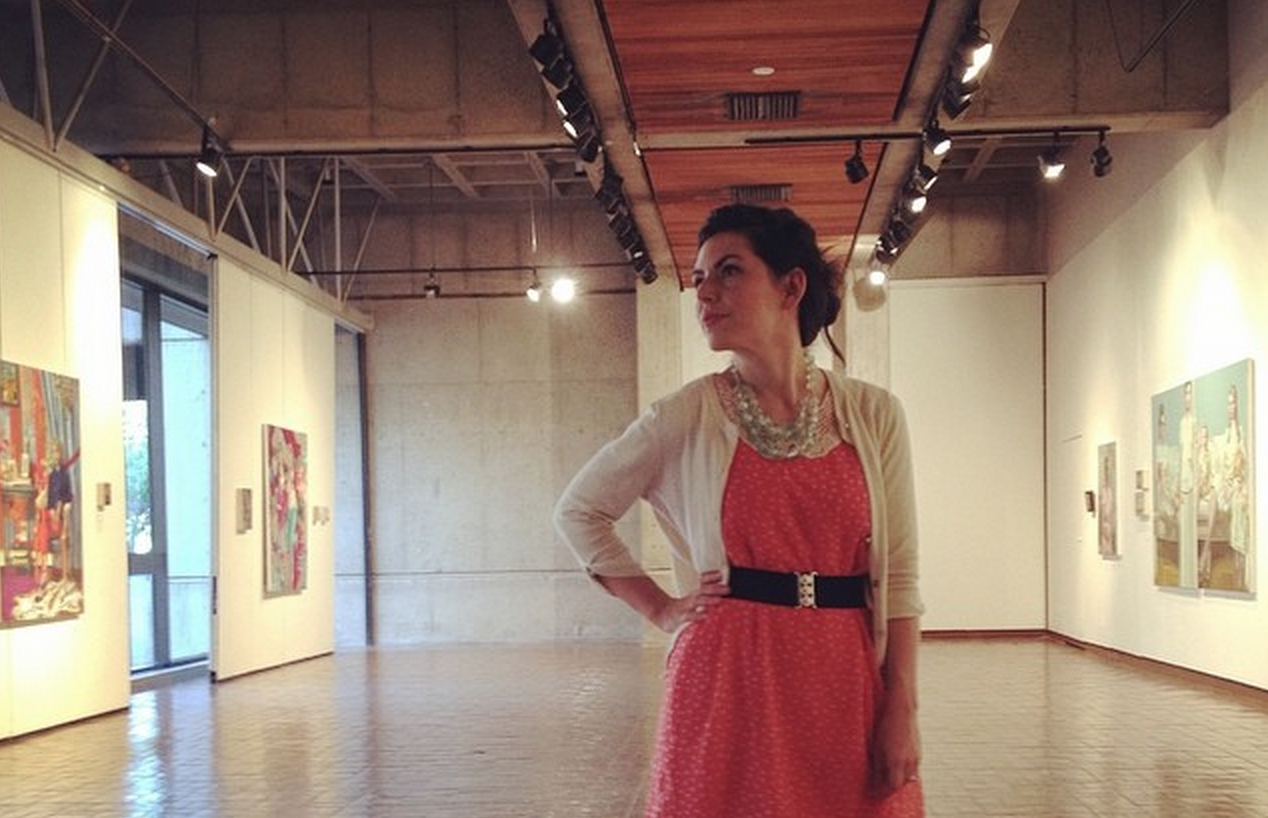Mary Sauer is a painter from my home state of Kentucky who went on to receive a BFA from BYU and further study with William Whitaker, at the Art Students League of New York, and at the Grand Central Academy of Art. She has been featured on the cover of American Art Collector Magazine, in Southwest Art Magazine, and in International Artist Magazine. Sauer and her husband David, an operatic tenor, are currently enjoying a one-month-old baby. Amazingly, Sauer is legally blind, but she adds, “Luckily they have perfected contacts and glasses to where they don’t need to be an inch thick anymore—the glasses I had as a kid were huge.”
Talk about your creative process from idea to finished piece. My ideas begin by jotting down ideas. I am more visually motivated than conceptually motivated by work. For example, if I see a painting that is executed with beautiful brush strokes and paint quality, that tends to be what reaches out and grabs my attention first thing. Seeing something that visually inspires me really gets the creative process going and makes me excited to get into the studio. This has often happened when I look at a painting my John Singer Sargent or Abbott Thayer. I am different than a lot of artists because many times I will make a piece based first on what visually am I excited about putting on the canvas and secondly what the idea conveys. I was told in Grad School that many people work this way, but that you should keep it a secret so that the conceptual meaning doesn’t feel surface level or shallow. I think the more time I spend painting, the more meaning that I can assign to a piece as I go. Often times, I’m not even fully aware of an image’s potential to convey a message until after it’s finished. That being said, I am aware of jotting down emotions or body language and color palettes before I begin the process and why a model might be in a certain environment.
You paint almost exclusively women and some children. To me, the experience of painting a women is closer to my experience of life. I tend to paint people who have personalities or struggles that I understand or who are experiencing similar life events. It’s a way for me to tell my story through others. In fact I’ve been told that my portraits of women don’t feel sometimes like those particular women, even though there likeness is exact. I’ve been told that the portraits feel more like me. I am sharing my experience, but they are telling the story. I am also really interested in color palettes that typically feel more feminine and in painting softer forms. Children have the best faces for painting soft forms.
You talk about the ‘pressure for perfection’. How does this relate to artists in an age of social media? I think we are constantly looking at social media and what other people are doing with their lives. It’s easy to take an amalgamation of what a group of people are doing individually and compare that to what you are experiencing in life. When everyone shares the best parts of their lives, it’s likely that your own life will feel like it doesn’t seem to measure up. My piece Expectations (top of post) examines the shedding of the pressures that we place upon ourselves to be what we think others expect us to be. For me it specifically had to do with the decision of when to have children and how many children to have which I struggled with for many years until I eventually found freedom in accepting that it was okay to let go of others expectations and instead create my own for myself. The looseness of how the paint was handled and the allowance of imperfections in the painting like the dripping of medium help to show an abandonment of control.
What are you working on next? I will always be interested in women and children in environments be they interiors or outdoor spaces. I think the next thing will be based on my own inner struggles, whatever that may entail. I am hoping to be able to continue loosening up and pushing the painterly aspect of the work as well.
